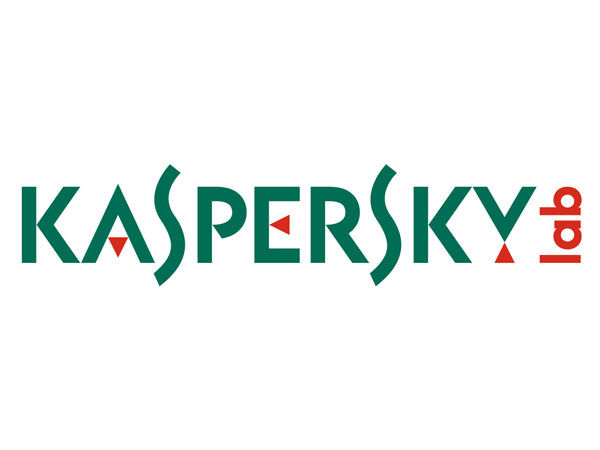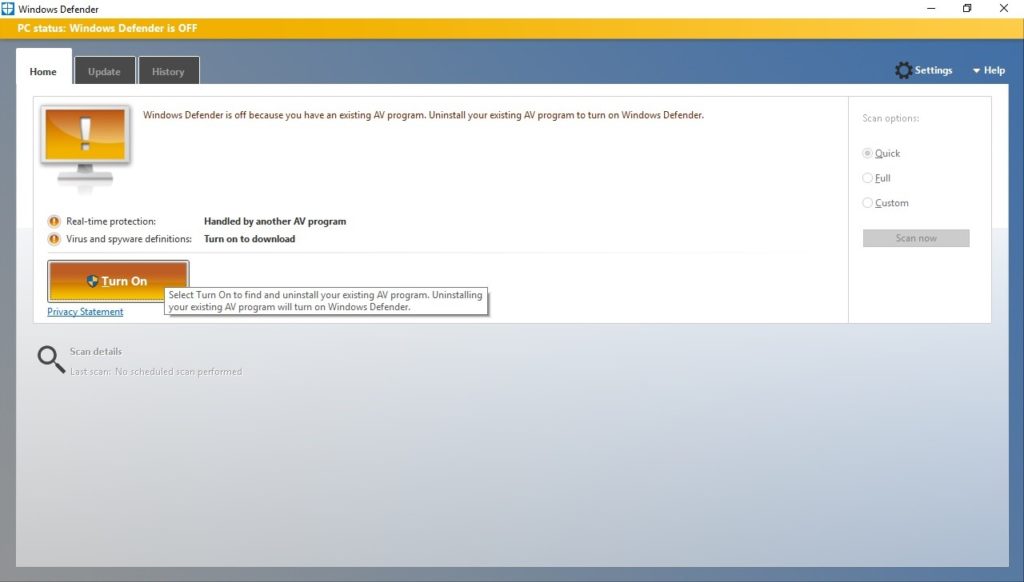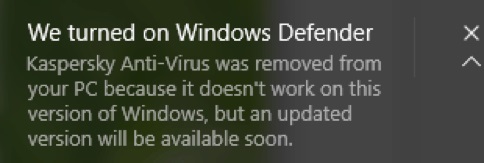Kaspersky Files Antitrust Complaint Against Microsoft Over Windows 10 Antivirus Approach
Kaspersky announced that it has filed an antitrust complaint against Microsoft for disabling its antivirus service with both the European Commission and the German Federal Cartel Office. The company had previously filed an antitrust complaint against Microsoft in its home country, Russia.
Is Microsoft Abusing Its Dominant Position (Again)?
Kaspersky argues that Microsoft has used its dominant position in the desktop operating system market to promote its own “inferior” security software at the expense of users’ previous “self-chosen” security solution. Kaspersky said that such promotion is made using questionable tactics, which it wants to bring to the attention of antitrust authorities.
According to Kaspersky, the earlier complaint in Russia has already led Microsoft to fix some of the issues that Kaspersky raised, despite Microsoft initially denying that it created anti-competitive conditions for third-party security solutions.
One of the questionable tactics Microsoft seems to have used is showing the Windows Defender status page in a way that made it seem like a PC wasn’t as safe as it could be because it was using an antivirus other than Microsoft’s own.
Another issue that Kaspersky raised is that the status page was also showing an orange button on which the words “Turn on” were written. Once again this made users believe that they weren’t secure unless they pressed that button and enabled Microsoft’s antivirus, even though a third-party antivirus was already enabled.
The Russian antivirus company also complained that Microsoft intended to allow only one third-party antivirus to remain active on a system. However, this limitation was ditched. All the other issues mentioned so far were also fixed following Kaspersky’s complaint to the Russian Federal Antimonopoly Service (FAS).
Issues Not Yet Addressed
Kaspersky also complained about the fact that once upon a time Microsoft’s solution used to be a separate program you could install, just like any other third-party Windows application, but now it’s deeply integrated into Windows, to the point where home users can’t completely turn it off or delete it from their OS.
Get Tom's Hardware's best news and in-depth reviews, straight to your inbox.
Kaspersky said that Microsoft is also limiting how the license expiration for third-party antivirus solutions is being shown on Windows, which reduced antivirus companies’ subscription revenues. Microsoft only allows the expiration notifications to appear through the new “Action Center,” which doesn’t seem to be that good (possibly on purpose) at drawing users’ attention.
One other issue that Microsoft hasn’t addressed, according to the antivirus company, is that when users are upgrading their older operating systems to Windows 10, the Kaspersky antivirus seems to “disappear,” as Microsoft eliminates some drivers in the process because they aren’t compatible with Windows 10.
Afterwards, Microsoft replaces the Kaspersky antivirus with its own Windows Defender. Microsoft only seems to give users a warning, in passing and in a less readable font, that the Kaspersky antivirus was disabled in the upgrade process.
The main problem Kaspersky has with this is not that Microsoft decided that Kaspersky is incompatible in an arbitrary manner, but that it has reduced the developer testing time for RTM versions from a previous two months to only two weeks. This doesn’t seem to be enough time for Kaspersky, and potentially other antivirus products, to properly ensure their products are compatible with the latest version of Windows.
Perhaps this also wouldn’t be a big issue if Windows didn’t eliminate or disable programs that were somehow not 100% compatible with the latest update. After all, if Microsoft did this to all programs, most games would probably stop working on Windows a couple of years after launch, once their developers stopped releasing patches for them.
It’s also a little ironic that Microsoft seems to give developers only two weeks to test their applications, when it has complained in the past that even three whole months weren’t enough to release a patch for a Google-disclosed security flaw.
Does Kaspersky Have A Strong Case?
We only have Kaspersky’s side of the story so far. The company does seem to raise some interesting issues, but not all of them may be backed by strong arguments. First off, it’s unclear whether Microsoft absolutely has to allow other antivirus products on its platform.
Just because this third-party antivirus market has existed in the past, may not necessarily give these companies a right to exist in the future. Here, we could take a look at how many companies Facebook has killed over the years, as it kept playing with its own platform rules. This issue may ultimately be decided by a court, if the case goes further, because it’s clearly not an easy question to answer.
Another example would be Google banning mobile app ad-blockers from its platform. No antitrust body has started an investigation on Google over this, even though Google is already part of an antitrust investigation in the European Union, albeit for different reasons.
Ideally, Windows wouldn’t need an antivirus solution at all, and with Windows 10’s mandatory updates, there may be less of a need for one in the future. However, the focus may switch to other type of security solutions, such as anti-exploit tools, virtualization sandboxes, and so on.
Kaspersky is probably right that having a single vendor offer security for a platform is not a good idea in the long term. Malware creators would love that to happen because it would be much easier and much more tempting to target a single security solution on which over a billion computers rely.
If Microsoft’s end goal is to ban third-party security solutions from Windows 10, then it may indeed be in the wrong here, even if it’s legally in the right to do so. However, given Microsoft’s dominance in the OS market, it’s possible that antitrust bodies may believe that Microsoft doesn’t have a legal right to unfairly limit or ban third-party security solutions from its platform, either.
The fact that Microsoft has already begun to fix some of the issues that Kaspersky has raised in the past, and that it even has to make use of “underhanded tactics,” as Kaspersky called them, shows that Microsoft may be aware that limiting third-party antivirus choices on its platform in a more direct way isn’t going to be taken lightly either by customers or government bodies.
Lucian Armasu is a Contributing Writer for Tom's Hardware US. He covers software news and the issues surrounding privacy and security.
-
Dark Lord of Tech I use Kaspersky on a couple of my machines and noticed this issue , happens with Malwarebytes 3.0 too.Reply -
greenmachineiijh I also experienced this. I have Kaspersky and a couple weeks ago I saw the Microsoft warning pop up that I was not secure. IT WILL NOT GO AWAY UNLESS YOU ENABLE WINDOWS ANTIVIRUS TOO. Now I have both running in the background so I don't see the warnings any more. NICE...Reply
I was wondering why since Kaspersky has always integrated with Windows and the warnings about security were always removed once it was installed. Windows was "smart" in that regard. So this is not JUST "about a button". It is about changing behavior, falsely reporting statistics and warnings and FORCING the user to enable its own service even if it is not wanted or needed so that Microsoft can get the upper hand. -
fmaxwell Kaspersky is just whining because they see their revenue stream drying up. Kaspersky wants Microsoft to pop up a message at boot time that says "Kaspersky anti-virus not installed!" with two buttons: "Install Kaspersky AV" and "Shutdown".Reply -
SockPuppet "It is about changing behavior, falsely reporting statistics and warnings and FORCING the user to enable its own service even if it is not wanted or needed so that Microsoft can get the upper hand."Reply
The "upper hand" at what, exactly? Having to provide ongoing support for free in perpetuity? -
derekullo "Malware creators would love that to happen because it would be much easier and much more tempting to target a single security solution on which over a billion computers rely."Reply
Sadfully, billions, or at least 100s of millions, of PC's already rely on Windows Defender as their only security solution due to Window's heavy handed approach to baking it into Windows 7/8/10 combined with the laziness and or ignorance of getting even a 3rd party free antivirus. (Heavy-handed makes it sound like I dislike it. Free always there antivirus is greatly appreciated and is a great step toward everyone having at least a basic level of protection.)
Malware creators need only target the top 4 anti-virus software in market share to reach the majority of users, that even use anti-virus, not including Defender.
https://www.metadefender.com/reports/anti-malware-market-share#!/
Avast, Eset (Nod32), McAfee, Avira
If your Kaspersky subscription expires and leaves you with no protection then I fully support Windows automatically disabling, not uninstalling, Kaspersky and allowing Defender to take over.
Weak anti-virus is better than no anti-virus.
If upgrading to Windows 10 breaks your antivirus then Windows is doing you a favor by saying "it won't work I'm uninstalling it" versus letting you use an antivirus that may not even work.
Now you can reinstall the antivirus along with the rest of your programs the upgrade broke.
I recommend doing a fresh reinstall of Windows 10 rather than upgrading 7 or 8.
"Afterwards, Microsoft replaces the Kaspersky antivirus with its own Windows Defender. Microsoft only seems to give users a warning, in passing and in a less readable font, that the Kaspersky antivirus was disabled in the upgrade process."
Even with Tom's low rez picture I can still read: "Renew your subscription to Kaspersky Internet Security to protect your PC. We turned on Windows Defender for the meantime"
Seems clear enough what I should do.
Do users want a cartoon showing Kaspersky dying with the only way to revive him being to take a Reinstall Pill? -
bloodroses I've ran into similar issues with the free version of Panda that I'm using as well.Reply
The biggest issue is they're pulling the same thing they did back in the Windows 95 days when Internet Explorer was first integrated to the OS and continuously tried to force itself as the default browser. Microsoft got sued over it and lost. The same will probably happen here. -
MaCk0y This reminds me. What happened to the Web Browser choice list? Was it with Vista or 7? It has been some time now.Reply -
IceMyth The problem with MS is that, they are trying :1) to push everything to go through their store; 2) or force users to switch to their services to MS that maybe free now but later it wont by making things harder for 3rd party programs.Reply
-
jimmysmitty Reply19783286 said:I also experienced this. I have Kaspersky and a couple weeks ago I saw the Microsoft warning pop up that I was not secure. IT WILL NOT GO AWAY UNLESS YOU ENABLE WINDOWS ANTIVIRUS TOO. Now I have both running in the background so I don't see the warnings any more. NICE...
I was wondering why since Kaspersky has always integrated with Windows and the warnings about security were always removed once it was installed. Windows was "smart" in that regard. So this is not JUST "about a button". It is about changing behavior, falsely reporting statistics and warnings and FORCING the user to enable its own service even if it is not wanted or needed so that Microsoft can get the upper hand.
What upper hand? Let me ask you this, does it cost Microsoft more to put out patches for Defender or to help people for hours and hours trying to get their system back up and running?
Honestly all I see is Microsoft trying to help protect their customer base.
19783406 said:"Malware creators would love that to happen because it would be much easier and much more tempting to target a single security solution on which over a billion computers rely."
Sadfully, billions, or at least 100s of millions, of PC's already rely on Windows Defender as their only security solution due to Window's heavy handed approach to baking it into Windows 7/8/10 combined with the laziness and or ignorance of getting even a 3rd party free antivirus. (Heavy-handed makes it sound like I dislike it. Free always there antivirus is greatly appreciated and is a great step toward everyone having at least a basic level of protection.)
Malware creators need only target the top 4 anti-virus software in market share to reach the majority of users, that even use anti-virus, not including Defender.
https://www.metadefender.com/reports/anti-malware-market-share#!/
Avast, Eset (Nod32), McAfee, Avira
If your Kaspersky subscription expires and leaves you with no protection then I fully support Windows automatically disabling, not uninstalling, Kaspersky and allowing Defender to take over.
Weak anti-virus is better than no anti-virus.
If upgrading to Windows 10 breaks your antivirus then Windows is doing you a favor by saying "it won't work I'm uninstalling it" versus letting you use an antivirus that may not even work.
Now you can reinstall the antivirus along with the rest of your programs the upgrade broke.
I recommend doing a fresh reinstall of Windows 10 rather than upgrading 7 or 8.
"Afterwards, Microsoft replaces the Kaspersky antivirus with its own Windows Defender. Microsoft only seems to give users a warning, in passing and in a less readable font, that the Kaspersky antivirus was disabled in the upgrade process."
Even with Tom's low rez picture I can still read: "Renew your subscription to Kaspersky Internet Security to protect your PC. We turned on Windows Defender for the meantime"
Seems clear enough what I should do.
Do users want a cartoon showing Kaspersky dying with the only way to revive him being to take a Reinstall Pill?
I mean that is the only true way to portray it. Maybe have Clippy standing over Kasperky with a knife....
19783548 said:This reminds me. What happened to the Web Browser choice list? Was it with Vista or 7? It has been some time now.
Was in Europe only and as far as I remember it affected 7 and newer, as at the time Vista was still an after though.
I am still waiting for Europe to make Apple, Google and Linux do the same with their OSes.
19783787 said:The problem with MS is that, they are trying :1) to push everything to go through their store; 2) or force users to switch to their services to MS that maybe free now but later it wont by making things harder for 3rd party programs.
1. They are pushing the store but I have yet to see anything be restricted only to it. Google and Apple do the same, although MacOS is more open yet on Android apps can be removed (censored) if they do not meet the standards.
2. I have yet to see Microsoft force anything. Would you rather your PC have the tools to protect you in case something else can't or no? Has there been one program that Microsoft has not allowed you or someone to use short of compatibility issues? As in you know the program works but Microsoft said no?
I have yet to.
We have no issues with 10 and ESET yet at work. Every system with it on and any version of 10, Defender is fine as is the security center. Well to be fair our security center is alerted only because we turn off the Windows firewall as we have a hardware one, but the AV has no issues.



